- Register
- Log in to Tune-In
- Wishlist (0)
-
Shopping cart
(0)
You have no items in your shopping cart.
Beatles News

Director Peter Jackson says he has a new Beatles movie idea in mind less than a year after the release of his acclaimed The Beatles: Get Back.
“I’m talking to the Beatles about another project, something very, very different than Get Back,” he recently told Deadline. “We’re seeing what the possibilities are, but it’s another project with them. It’s not really a documentary … and that’s all I can really say.”
Get Back premiered on Disney+ in November and included nearly eight hours of footage originally intended for the band's 1970 film Let It Be, which was directed by Michael Lindsay-Hogg. The 2021 movie recently earned five Emmy nominations, including two for Sound Mixing, which, as Jackson said, “is always a category that people don’t hold in the highest esteem, I guess would be a way to say it, other than people who work in the field. Get Back is all about the sound, and restoring the sound and developing the AI things to separate the musical tracks.
Source: ultimateclassicrock.com
details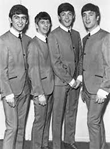
George Harrison temporarily left The Beatles, as seen during their Disney+ documentary series, The Beatles: Get Back. Ringo Starr confirmed that he walked away from the group before that after feeling like the other three members were “really close.”
Along with George Harrison, Paul McCartney, and John Lennon, Ringo Starr is one of the featured artists in the Beatles. These artists broke records in the UK and overseas, making history with their unique rock music and massive fan base.
It wasn’t always easy for the band members, as Ringo Starr confirmed he left the Beatles while working on The White Album.
Source: cheatsheet.com
details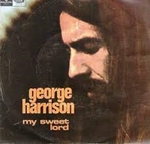
George Harrison's first solo number one single stands alone in the history of rock music for going against the secular grain as a full-on love song to the Creator. Sure, there'd been some precedent with both The Beach Boys' God Only Knows and Norman Greenbaum's Spirit In The Sky, but My Sweet Lord was different. The lyric is loaded with forty “Lords,” sixteen “Hallelujahs” and nine “Hare Krishnas.”
As John Lennon joked about his former bandmate's hit in 1970, “Every time I put the radio on, it's 'Oh my Lord.' I'm beginning to think there must be a God.”
Source: Bill DeMain/loudersound.com
details
After The Beatles split up in 1970 each of the Fab Four went their own way. They each started releasing their own solo music and dominating the charts in their own way. George Harrison started early with the release of his 1970 album All Things Must Pass.
In this album was the track My Sweet Lord, a song that was later used to accuse Harrison of plagiarism.
After that, the star could not rekindle his love for music.
Harrison was accused of plagiarising the classic song He's So Fine in My Sweet Lord.
While the star - and the court - determined that he did not deliberately plagiarise the song, he did lose the lawsuit.
After that, he struggled to find a love for the art-form again.
He said: "It’s difficult just to start writing again after you’ve been through that. Even now when I put the radio on, every tune I hear sounds like something else."
Source: Callum Crumlish/express.co.uk
details
This week, on July 20, back in 1968, Paul McCartney's life came crashing down around him in front of millions of people. His girlfriend at the time, Jane Asher, split up with him in perhaps the most ruthless way possible after five years of being together.
McCartney and Asher first met in 1963 as The Beatles were beginning to become one of the biggest acts on the planet. At the time, she was a prominent British actor and was no newcomer to fame.
Cynthia Lennon - the wife of McCartney's bandmate and best friend, John Lennon - recalled the young Hey Jude singer falling in love with Asher extremely quickly.
She wrote: "Paul fell like a ton of bricks for Jane. The first time I was introduced to her was at her home and she was sitting on Paul’s knee. My first impression of Jane was how beautiful and finely featured she was. Her mass of Titian-coloured hair cascaded around her face and shoulders, her pale complexion contrasting strongly with her dark clothes and shining hair."
Source: Callum Crumlish
details
Beatrice McCartney is a famous child celebrity and the beautiful daughter of the singer Paul McCartney.
Additionally, the full name of Beatrice McCartney is Beatrice Milly McCartney.
Paul is a fascinating songwriter, singer, and band member of The Beatles’ legendary band. In London, England, on 28th October 2003, she was born.
In addition, she stands at a decent height. She appears to be quite tall in the stature of her photos, relative to her environment, anything to go by.
However, details concerning her actual height, weight, and other body measurements are presently not publicly accessible. We will update this when the information is accessible.
As Beatrice McCartney has yet to begin working, her net worth cannot be measured at this duration. But we do know, however, that she lives a luxurious lifestyle due to the money she inherited as a result of her prevalent and successful parents’ divorce.
Source: Amanda Catherine/louisvillemojo.com
details
John Lennon was murdered outside his New York City apartment on December 8 1980, just two days after giving an interview about his friendship and rivalry with Paul McCartney.
When The Beatles split in 1970, the bandmates all went their separate ways with most of them not meeting up again for years. In Paul's book, The Lyrics: 1956 To The Present, he said: "When we broke up and everyone was now flailing around, John turned nasty.
"I don’t really understand why. Maybe because we grew up in Liverpool, where it was always good to get in the first punch of a fight."
John then criticised his former band when he released his first solo album in December 1970, making tensions worse. However, they put aside their differences before the end, with John revealing his true thoughts just days before his untimely end.
Years later, Paul’s wife Linda shared the last thing John ever said about his old bandmate. Considering what was to come, his last words were truly heart-breaking.
Speaking to Ultimate Classic Rock, John said to Paul: “Think about me every now and then, old friend.”
Source: Aaron Curran/liverpoolecho.co.uk
details
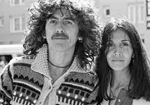
Olivia Harrison opens “Came the Lightening: Twenty Poems for George” with a Pablo Neruda epigraph.
What Harrison seems to have found in this work, being published two decades after the death of her husband, Beatle George Harrison, is a thoughtful, meditative peace. While some of her poems explore the pain and confusion involved in grieving, many more celebrate her 23-year union with a partner who seems the definition of a soulmate.
In his forward to “Came the Lightening,” film director Martin Scorsese dubs Harrison's book a work of “poetic autobiography.” Indeed, Harrison includes a poem about both her childhood and her husband's, recounts the early days of their relationship moving into their Friar Park estate and considers time spent parenting, gardening, visiting with famous friends and being surrounded by music. The poems about coming to terms with being a widow prove just as compelling, looking clear-eyed at loss and building something new on the foundation of what was.
Source: John Young/post-gazette.com
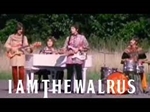
John Lennon revealed the sexual meaning behind one of the lyrics from The Beatles’ “I Am the Walrus.”
John discussed the role of sex in music.
“I Am the Walrus” became a minor hit in the United States.
John Lennon once corrected a journalist who misheard a lyric from The Beatles’ “I Am the Walrus.” He said a line from the song was about sex rather than marijuana. Subsequently, John ruminated on the role of sex in music in general.
Source: cheatsheet.com
details
John Lennon once revealed his suspicion that his son Julian Lennon would have preferred to have Paul McCartney as a father, but he “unfortunately” ended up with him instead. What relationship did the father and son have before the former Beatle’s tragic death? And how close was Julian to McCartney?According to Julian Lennon, John Lennon was only sometimes present in his life following his parents’ divorce and his father’s marriage to Yoko Ono. “[My] relationship with dad was very few [and] far between, really,” he revealed in an interview with BBC (transcribed by Rock and Roll and Garage.) He added, “There are fond flashes of memories.”
Source: cheatsheet.com
details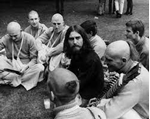
In the mid-1960s, George Harrison found spirituality. Taking LSD opened a door for him. Then his musical and spiritual guru, Ravi Shankar, opened the flood gates. However, when he started playing sitar, reading about Hinduism, chanting, and incorporating more religious themes in his music, some people doubted whether he was genuine about his spirituality. They thought it was only a passing phase.
It wasn’t. George remained religious for the rest of his life. People might have doubted him, but he also doubted another fellow rock star’s spirituality.
Source: cheatsheet.com
details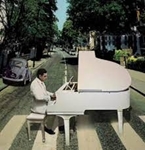
Stephen Marks reveals The Beatles unique genius by stripping down their music to their one most overlooked component; Their melodies, which Marks contends to be superior to any melodies written by anyone of any genre in music history.
This CD is certain to have massive universal appeal to all Beatle fans worldwide. Even those unfamiliar with their music will believe that they are listening to Beethoven or one of the great classical composers.
Marks' uniquely elegant style of playing is perfect for these melodies, and this CD will emotionally move every listener, just as The Beatles did.
Source: Marks Music/prnewswire.com
details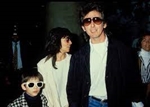
George Harrison and his wife, Olivia, welcomed their only son, Dhani, in 1978. They named him after two Indian musical notes. George strived to raise Dhani out of the spotlight and away from his fame. However, that doesn’t mean George shielded him away from anything. The former Beatle didn’t hold back from telling Dhani things and treated him like an adult.Shortly after Dhani was born, George and Olivia decided to keep him as much away from the spotlight as possible. George already wanted to stay away from people, so it wasn’t that hard. George said it was unfortunate that John Lennon’s kids had grown up in the height of publicity and hadn’t gotten a chance to be kids. He didn’t want Dhani to go through a similar thing.
Source: cheatsheet.com
details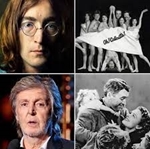
Paul McCartney’s planned new musical wouldn’t be the first time an actual Beatle created something original for Broadway. But it would be wonderful.
Three years ago, McCartney announced he was writing his first musical – a stage adaptation of Frank Capra’s 1946 movie “It’s a Wonderful Life,” a holiday evergreen in which Jimmy Stewart plays a man disappointed with his life who gets to see what the world would be like had he never been born.
The show seemed likely to wind up on Broadway, considering the credentials of his collaborators: book writer and co-lyricist Lee Hall (Tony winner for “Billy Elliot”; Network); producer Bill Kenwright (Tony-winner for “A Doll’s House” revival; “Passing Strange.”) There was even talk at the time of opening around Christmas, 2020.
Source: newyorktheater.me
details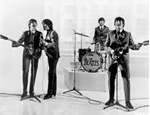
The Beatles‘ “Eleanor Rigby” is one of the Fab Four’s most famous ballads. During the songwriting process, Paul McCartney asked John Lennon and a pair of others to work on the lyrics of the song. John explained why Paul’s actions offended him.John said Paul didn’t directly encourage him to work on “Eleanor Rigby.” “But by that time he didn’t want to ask for my help, and we were sitting around with [The Beatles’ personal assistant] Mal Evans and [music industry executive] Neil Aspinall, so he said to us, ‘Hey, you guys, finish up the lyrics.'” John was incensed by Paul’s actions. “Now I was there with Mal, a telephone installer who was our road manager, and Neil, who was a student accountant, and I was insulted and hurt that Paul had just thrown it out in the air,” he said.
Source: cheatsheet.com
details